Whether you are a new Website or an old website, while designing a content strategy it can be very easy to get lost in the race for creating new and unique content. If you are just like that, then you might be missing out on a huge opportunity to improve your organic traffic from your existing content.

This is because your existing content, however well may rank will start to decay in its performance in Google SERP. This decay in performance may come in 3 ways:
- Decrease in Rankings
- Decrease in Overall Clicks
- Decrease in Google Impressions
- Decrease in Page Authority
⭐️What is Content Decay in SEO?
This phenomenon of gradual decay of a specific page or content’s performance in the Google SERP over time is called Content Decay.
This is to be noted that Content Decay is not limited to just blog posts but can occur for any kind of pages in the internet. Although there are different types of content, the main categories are:
Blog Posts
Product Pages
Product Category Pages
Service Pages
Listing / Job Posting Page
Review Pages
⭐️How to Identify Content Decay?
An important part of executing any content marketing strategy is to monitor the traffic coming from your existing pages and to keep and active eye on the top performing content. Having said that, how will you identify top performing content? There are some tool that you should setup in order to monitor your page traffic performance on a daily basis.
Google Analytics 4

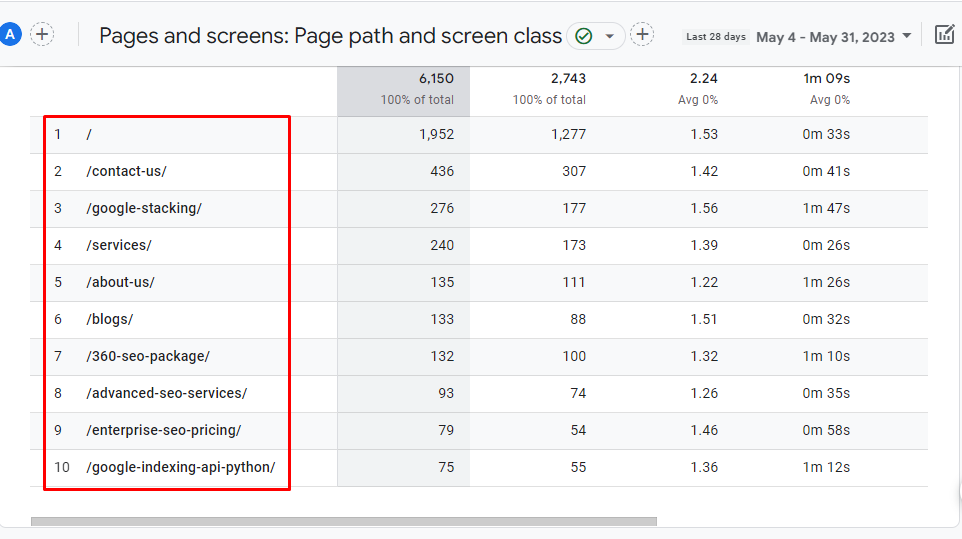
By going into the GA 4 > Engagement > Pages and Screens Report we are able to identify and monitor individual page performance in Google. This is the most accurate tool to monitor SERP performance and identify signs for content decay.
Ahrefs
If you have an Ahrefs account, you can log into it. Navigate into the Site Performance Report and you should be able to monitor your site organic traffic performance over time. The main metrics you are looking for are organic traffic and organic traffic value.
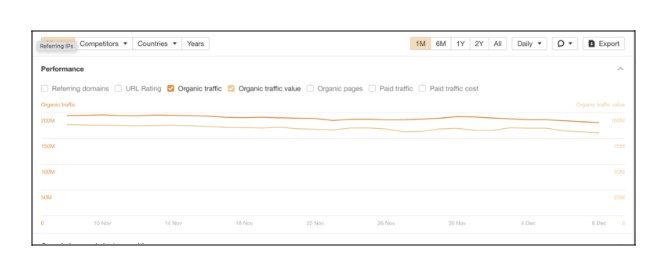
⭐️SEO Lifecycle of a Piece of Content
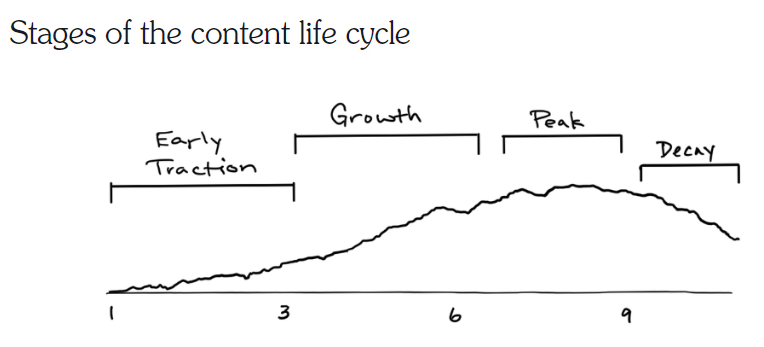
This is the average lifescycle stages after publishing a new page in the Website.
Early Traction
This is the phase where your content is recently published and takes some time to rank in the SERP. This initial period can vary anywhere between a few days to a few months. This is the time taken by search engines to understand the content and serve it against relevant search queries.
Growth
Once the search engines are able to understand and index your content, it will eventually to rank higher for the relevant search queries. Also with further On Page optimization and with relevant backlink gain, can further help to push the rankings near the first position.
Peak
Over time, published content reaches a point of maximum expansion. Several factors contribute to these limitations.
When a competitor’s piece surpasses your content in ranking, it can result in reduced clicks and backlinks for your post. Nevertheless, even if your article maintains its top position, its potential to generate traffic is constrained by the monthly search volume (MSV) of its primary keywords.
Decay
After a certain point, the SEO performance of your content can enter a state of stagnation and gradually decline.
As the piece becomes outdated or loses its competitive edge, its ranking may decrease, leading to reduced organic search visibility.
While decay is a natural process, it does not imply that you have no control over it. In the following sections, we will explore five strategies to update your content and enhance its search rankings once more. However, before delving into those strategies, let’s examine the consequences of content decay in more detail.
⭐️Different Reason behind Content Decay
There can be multiple reasons behind the decay in performance of a particular piece of webpage. Some of them are as below.
Decay in Content Freshness
Internal Competition
External Competition
Shift in Search Intent
Decay in Content Freshness
Often Search Engines prioritize Fresh content, so when a particular piece of content gets old, then there is tendency of search engines to rank a similar but newer content above it. Check the below example:
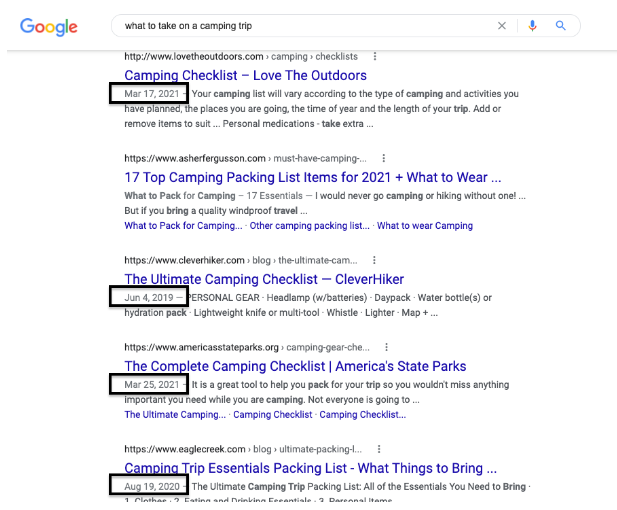
This type of issues usually occurs with Blog Content.
Internal and External Competition
This is the case when a particular type of content doesnot perform well in the SERPs due to similar pages competing against each other for the same term. These pages can be both external or internal.
Such kind of problem is faced mostly by Ecommerce businesses where too many similar categories and products compete against each other to bring each other’s ranking down.
Similar case happens with external competition. When a keyword is competitive too many sites are optimizing their content for that target keyword. Its quite easy to get ranked by another competitor as there are thousands of on-page and off-page ranking factors that contribute to page rankings.
Shift in Search Intent
Identifying the right type of content for the right type of keyword is critical in improving the relevancy of the content. It is long being believed that the relevancy of the content is the number 1 content factor and Google calculates relevancy through a number of Signals.
Normally there are 3 types of search intent:
Informational
Commercial
Transaction
While Blogs and Guides may rank for informational search terms , product page, category page and service pages are used to satisfy both commercial and transactional terms.
But what if the search intent itself change over time? This usually occurs with shift in technology and with new innovations and products coming up.
For example:
Someone trying to rank for Electric Car in 2017 could have done it by simply writing a long form and well optimized blogs and some backlinks.
But today if you type “electric cars” then the intention would most likely to buy. That is the reason , shopping cards and Retail store website rank high for this query.
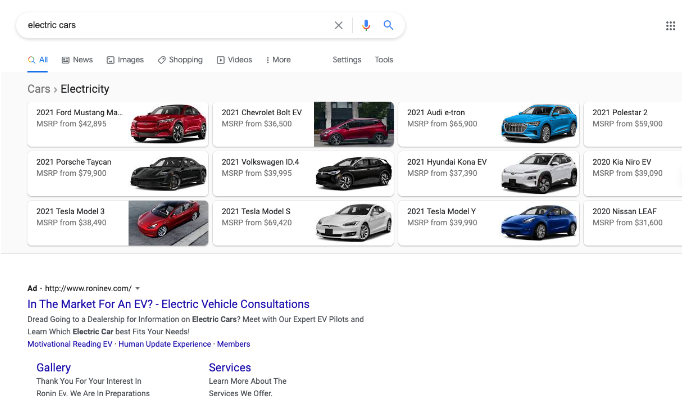
⭐️How does Content Decay affect Our SEO?
Content decay not only affects organic traffic but also has various repercussions. It results in a decline in search visibility, a drop in click-through rates (CTR), reduced business outcomes such as leads and revenue, and fewer backlinks.
Decline in search visibility: As content decays, the number of keywords that the post ranks for decreases, leading to a decline in overall visibility. It’s important to remember that blog posts often rank for numerous keywords, not just the target keyword.
⭐️Click-through rate (CTR) drops: Numerous studies have shown that the top-ranking results in search receive the highest CTR. As your decaying content falls in the search engine results pages (SERPs), your CTR will inevitably decline. This ultimately translates to receiving less of the available search traffic.
⭐️Decreased business outcomes through site behavior: When content starts decaying, it typically means that it is no longer one of the best or most relevant results. Consequently, if users click on your result but don’t find what they want or need, they are likely to leave without exploring further within your site. This makes it challenging to achieve meaningful business outcomes from visitors who don’t engage with your site.
⭐️Negative impact on backlinks
Content decay significantly impairs your backlink performance. When your content becomes outdated or fails to align with search intent, its quality diminishes, resulting in a decreased appeal for organic backlinks. In some instances, when your content is severely outdated, site owners may even remove the links leading to your content as it no longer provides a satisfactory experience for their visitors. Consequently, your ability to gain and retain backlinks is adversely affected by content decay.
⭐️How to Fix Content Decay Issues and Recover Organic Traffic?
There are two scenarios of a content decay issue:
- Where the particular content type can be updated. Eg: For Blogs, Review Type Content, Service Pages etc.
- Where the particular content type may not be updated: Eg: Product Pages, Facts, Ecommerce Category pages.
- Where the content type needs to be Changed.
⭐️Case 1: Where the Particular Content Type Can be Updated
In this case the most effective techniques to ensure a boost in organic search performance can be following:
Update Content: Update certain information in the webpage, including new research or insights into the existing piece or incase of product pages, simply updating the specifications or rewriting the titles may work.
Add New Content: This includes the following.
- Find new long tail keyword variations.
- Create topical depth by expanding on sub topics
Merge Content To Rank Higher
Combining multiple smaller blog posts that have similar rankings into a single comprehensive master post can be advantageous. By transforming your short-form content into a robust long-form post, you unlock various benefits, such as:
- Rank for more keywords.
- Explain topics in greater detail.
- Create more sharable content.
⭐️Case 2: Where the Particular Content Type Cannot be Updated
This case is applicable mostly in case of product pages and pages containing definite content like statistics.
In this case the following strategies can help recover organic traffic and improve rankings:
Refresh Meta Tags: Often rewriting the meta tags like Title and Meta Description may lead to a higher CTR and some small gains in ranks.
Check Page Level Backlink Profile: Often website focus on building backlink profile to the home page and few core group of pages. However Google does not rank websites rather it ranks webpages and hence one must focus on improving the backlink profile on a page level. This may lead to higher rankings as Google may be inclined to rank a webpage with a higher backlink profile than its immediate competition with similar depth of content.
Syndicate Content: While the content in your website may become old, often a good strategy to recover organic traffic is to promote it using syndication strategies.
Content syndication refers to republishing an exact copy of content on one or more third-party websites. They post your piece — an article, a video, an infographic, etc. — with no edits or other changes but backlinking to you on the post, praising your authorship that way.
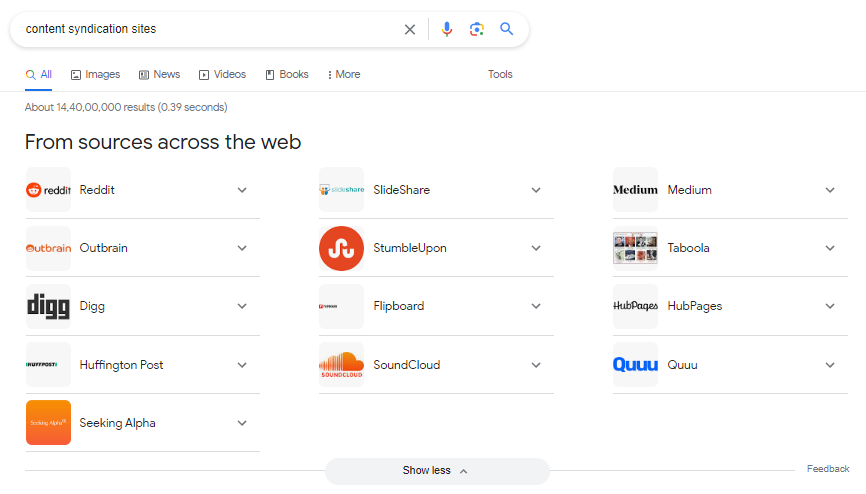
These are some of the content syndication sites. What is the advantage of it?
- These syndication sites often have higher DA and your article may naturally rank for some of its terms.
- Having multiple backlinks from these High DA Sites may improve the authority of the original page and it may regain its rankings.
- These content syndication sites are quite popular and may drive additional referral traffic to your website.
⭐️Optimize Page Wise User Experience
Optimizing user experience is crucial for retaining visitors and facilitating smooth navigation on your website. The following factors can negatively impact UX:
Slow loading times: Improving the loading speed of your website ensures that users can access your content quickly and without frustration.
Distracting visuals: Avoid cluttered or distracting visuals that can divert users’ attention from the main content. Use visually appealing elements that enhance the overall user experience.
Unresponsive images or videos: Ensure that images and videos on your website are properly optimized and responsive across different devices. This allows users to view and interact with the media seamlessly, enhancing their overall browsing experience.
⭐️Final Thoughts
While SEO growth can be wonderfully passive at times, the mindset of “set it and forget it” won’t work long term. It is important to constantly monitor page performance and apply the above strategies to counter any dips in content performance.


